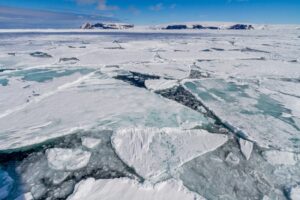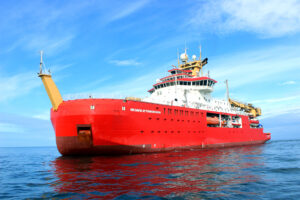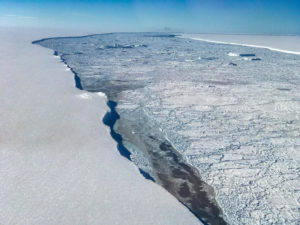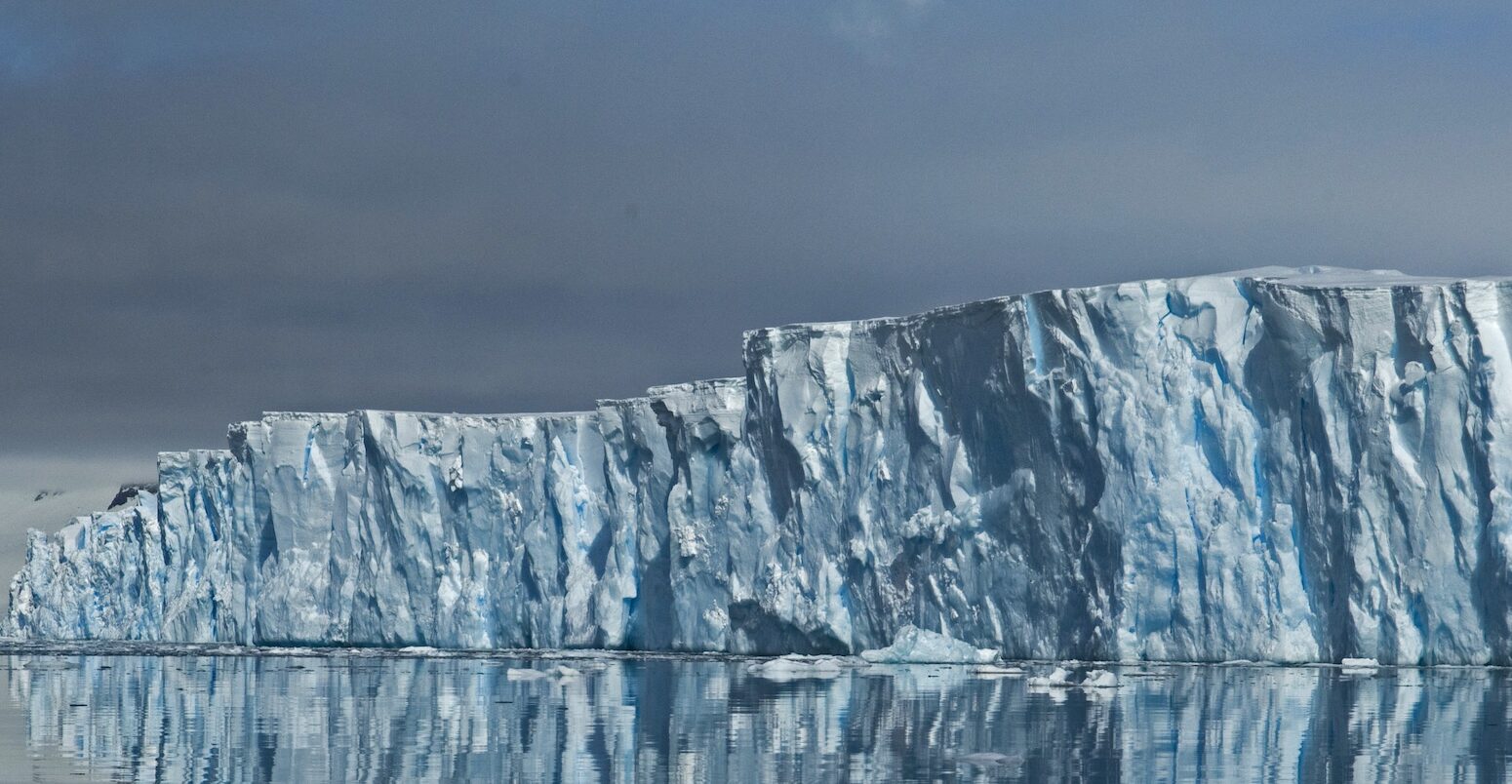
Guest post: How atmospheric rivers are bringing rain to West Antarctica

Dr Ella Gilbert
02.11.25
Dr Ella Gilbert
11.02.2025 | 12:01am“Atmospheric rivers” are bringing rain to the frozen slopes of the West Antarctic ice sheet, hitting the ice shelves that play a major role in holding back rapidly retreating glaciers.
In a new study, my colleagues and I show how rain is occurring in sub-zero temperatures due to these “rivers in the sky” – long, narrow plumes of air which transport heat and moisture from the tropics to the mid-latitudes and poles.
Rain in Antarctica is significant, not only because it is a stark indicator of climate change, but because it remains an under-studied phenomenon which could impact ice shelves.
Ice shelves in Antarctica are important gatekeepers of sea level rise.
They act as a buffer for glaciers that flow off the vast ice sheet, slowing the rate at which ice is released into the ocean.
In the study, we explore the causes of rain falling on ice shelves in the Amundsen Sea embayment region, which stand in front of the critically important Thwaites and Pine Island glaciers.
Researchers have warned the collapse of ice shelves in this region could trigger the loss of the entire West Antarctic ice sheet over several centuries.
Rivers in the sky
Atmospheric rivers are typically associated with bringing extreme rainfall to the mid-latitudes, but, in the frigid Antarctic, they can deliver metres of snow in just a few days.
In West Antarctica, atmospheric rivers deliver a disproportionate quantity of the year’s snowfall. Research shows they account for around 13% of annual snowfall totals, despite occurring on just a few days per year.
But what makes atmospheric rivers in Antarctica so interesting is that snow is only part of the story. In extreme cases, they can also bring rain.
To explore how extreme precipitation affects the Amundsen Sea embayment region, we focused on two events associated with atmospheric rivers in 2020. The summer case took place over a week in February and the winter case over six days in June.
We used three regional climate models to simulate the two extreme weather events around the Thwaites and Pine Island ice shelves, then compared the results with snowfall observations.
During both the winter and summer cases, we find that atmospheric rivers dumped tens of metres of snow over the course of a week or so.
Meanwhile, the quantities of rain driven by these events were not insignificant. We observed up to 30mm of rain on parts of the Thwaites ice shelf in summer and up to 9mm in winter.
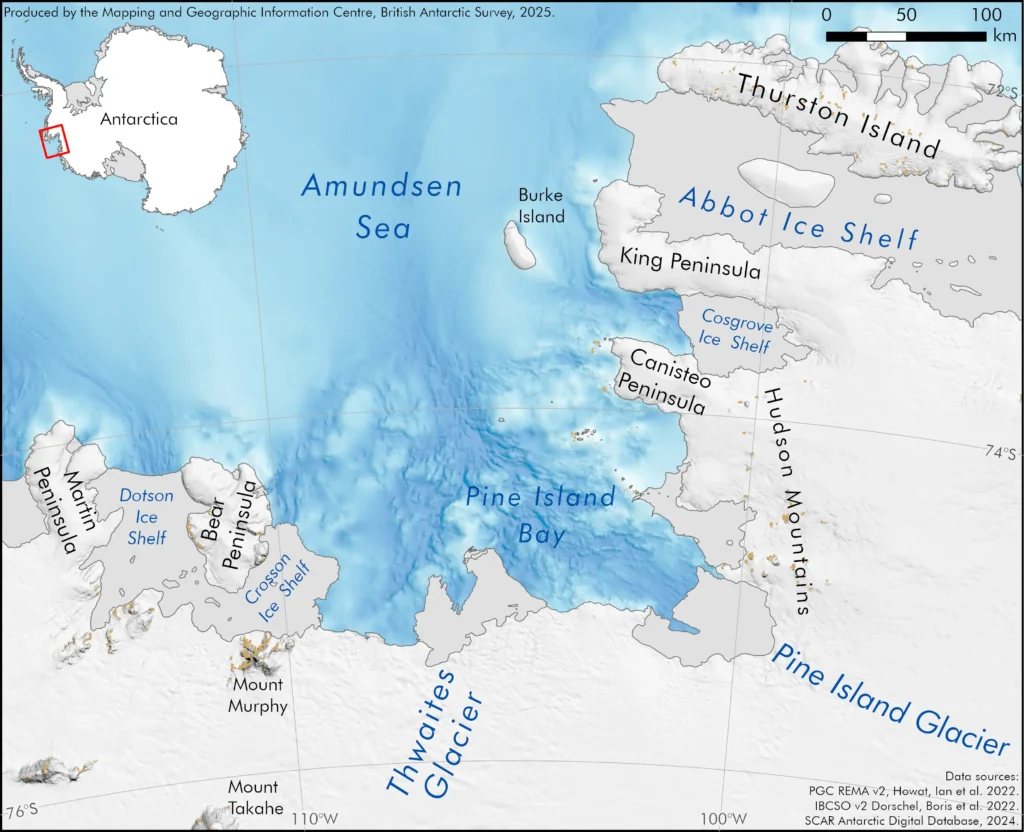
A mountain to climb
Antarctica’s cold climate and steep, icy topography make it unique. It also makes the region prone to rain in sub-zero temperatures.
The first reason for this is the foehn effect, which is when air forced over a mountain range warms as it descends on the downward slope.
Commonly observed across Antarctica, it is an important cause of melting over ice shelves on the Antarctic peninsula, the northernmost point of the continent.
When air passes over the mountainous terrain of the West Antarctic ice sheet during atmospheric river events, temperatures near the surface of the ice shelves can climb above the melting point of 0C.
This can accentuate the formation of rain and drizzle that stays liquid below 0C – also known as “supercooled drizzle”.
Another factor which leads to liquid drizzle, rather than snow, in sub-zero conditions is a lack of dust and dirt – particles which are usually needed to trigger the formation of ice crystals in clouds.
In the pristine Antarctic, these particles – which act as “ice nuclei” – are few and far between. That means that pure liquid water can exist even when temperatures are below 0C.
The origins of rain over ice shelves
It is easy to assume that rain that reaches the surface in Antarctica is just snow that has melted after falling through a warm layer of air caused by the foehn effect. Indeed, this is what we initially supposed.
But our research shows that more rain reaches the surface of Antarctica when the air near the ground is within a few degrees of freezing.
At times when the foehn effect is strongest, there is often little or no rainfall, because it evaporates before it gets a chance to reach the surface.
However, we saw rain falling well above the warm layer of air near the surface, where temperatures were universally below 0C – and, in some cases, as low as -11C.
Rare rain
Rain in Antarctica is a rare occurrence. The region’s normally frigid temperatures mean that most precipitation over the continent falls as snow.
However, exactly how rare rain is in the region remains relatively unknown, because there are virtually zero measurements of rainfall in Antarctica.
There are a number of reasons for this – rain falls infrequently, and it is very difficult to measure in the hostile Antarctic environment.
Our results show that extreme events such as atmospheric rivers can bring rain. And it is likely that rain will become a more common occurrence in the future as temperatures rise and extreme weather events occur more frequently.
However, until rain starts being measured in Antarctica, scientists will have to rely entirely on models to predict rain, as we did in this research.
It is also not yet known exactly how rain could impact ice in Antarctica.
We do know that rain falling on snow darkens the surface, which can enhance melting, leading to greater ice losses. Meanwhile, rain that refreezes in the snowpack or trickles to the base of the ice can change the way that glaciers flow, impacting the resilience of ice shelves to fracture.
So, if we want to understand the future of the frozen continent, we need to start thinking about rain too. Because while rain may be rare now, it may not be for long.
Gilbert, E. et al. (2025) Extreme precipitation associated with atmospheric rivers over West Antarctic ice shelves: insights from kilometre-scale regional climate modelling, The Cyrosphere, doi.org/10.5194/tc-19-597-2025.


